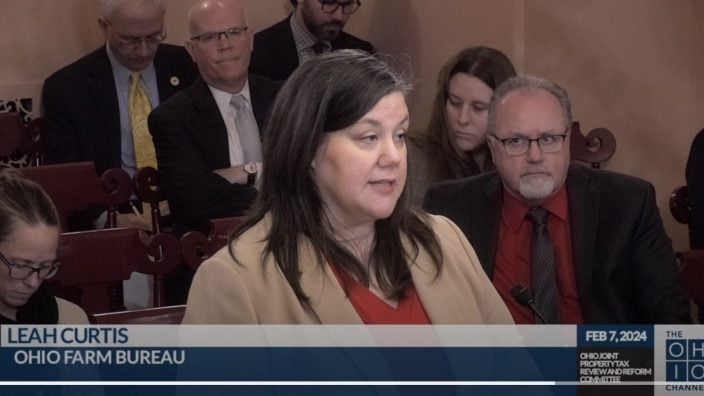Property tax policy under discussion
OFBF annual meeting delegates will discuss how or if current Farm Bureau policy should be modified in light of various property tax proposals.
Read MoreFarmers are happy with the purpose and philosophy of the CAUV program, but all would prefer some more predictability in their values and more importantly, their tax bill.
Last year’s state budget, thanks to the work of Ohio Farm Bureau members, included the creation of a Property Tax Review Committee to take on the task of looking at long-term solutions for CAUV and residential property tax values. At issue are substantial increases in property taxes across the board, including the Current Agricultural Use Valuation Program.
In early February, Leah Curtis, policy counsel and senior director of member engagement for Ohio Farm Bureau, testified in front of the newly formed committee to offer some background on what CAUV is and how the increases coming this year will impact Ohio agriculture.
“Many property owners saw their property values increase in the most recent round of reappraisals and updates,” Curtis told the committee. “You have heard of 40 or 50% increases in residential home values, but CAUV landowners in 41 counties saw their property values double or more in this last reappraisal cycle. While almost unheard of in residential or commercial real estate, increases of this nature have not been uncommon for CAUV in the last 20 years.
While the formula does a good job of valuing farmland for productive potential, Curtis said that applying the current tax system to those values does result in a very high property tax burden. Additionally, the CAUV calculation was designed to follow a farm economy, but the farm economy of the 1970s is one that no longer exists.
“Instead, today’s farmers operate in a global marketplace, and we have an incredibly volatile farm economy where prices and costs can change dramatically not just from day to day but from minute to minute,” Curtis said, “Where the actions of a country halfway across the world will throw our industry into a tailspin in a moment’s notice.”
Curtis pointed out one flaw in the property tax system: CAUV values are based upon the farm economy that was a year and further back, but farmers pay taxes in the present. So by the time the tax bill comes due, the farm economy could be very different from the one the calculation considered. Additionally, because of the three-year cycle of updating values, the farm economy can change wildly from the time the values are calculated to the last year of those values’ application for tax purposes three years later. She shared that farmers are happy with the purpose and philosophy of the CAUV program, but all would prefer some more predictability in their values and more importantly, their tax bill.
“Ohio agriculture would not be the number one industry it is today in Ohio without the Current Agricultural Use Valuation program,” Curtis testified. “The unchecked urban sprawl of the 1970s would have continued, driving up farmland property values and pushing farmers off of their land through increases in property taxes. Instead, Ohio enjoys some of the best and most productive farmland in the country, if not the world. The food security provided by Ohio agriculture is not just good for farmers, or good for the economy, but is a matter of national security.”
As the Property Tax Review Committee continues its work to look for possible reforms to the system, Ohio Farm Bureau will continue to be heavily involved in the process to find a solution that will offer all property owners across Ohio a tax valuation system that is more clear and certain.
Watch Leah Curtis provide her testimony, via The Ohio Channel.
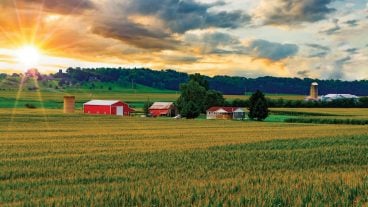
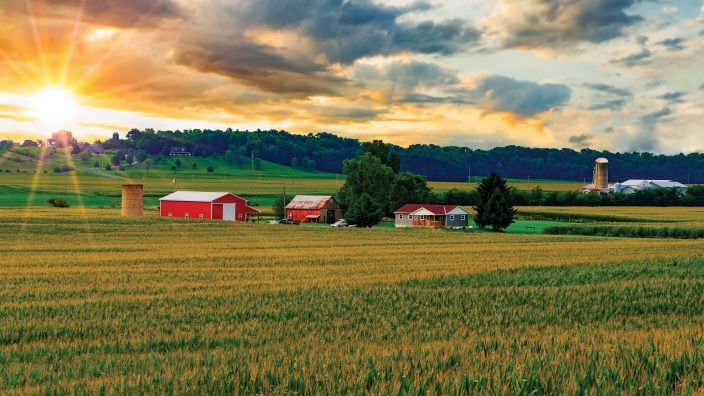
OFBF annual meeting delegates will discuss how or if current Farm Bureau policy should be modified in light of various property tax proposals.
Read More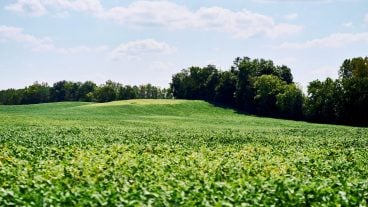
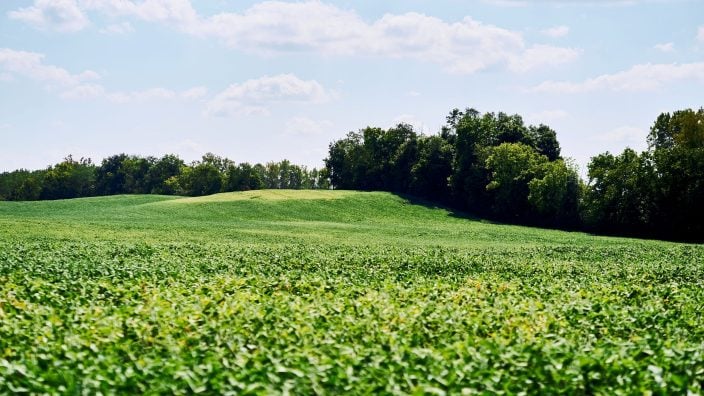
In 2025, about 21 counties are going through a reappraisal or update, and because Ohioans pay taxes one year behind, they will see new property tax bills in January 2026.
Read More
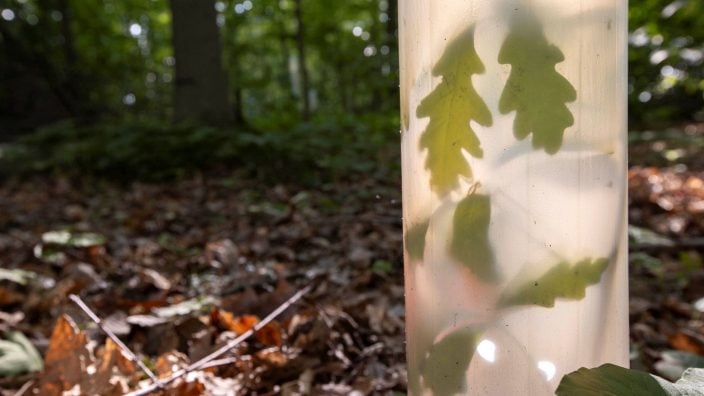
Overall, proper care, maintenance and communication are all essential parts of the process when it comes to trees.
Read More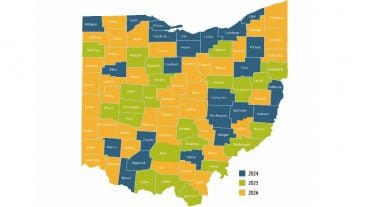
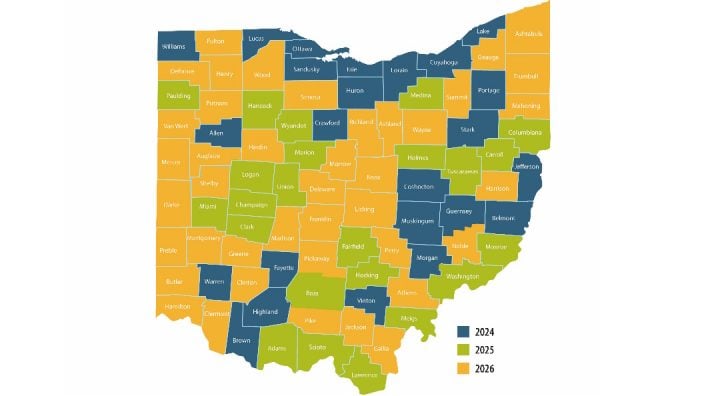
This will apply to the 23 counties on the revaluation cycle in 2025, who will see updated values and tax bills in January 2026.
Read More

‘We never stop pushing to ensure farmland taxation is fair and reflects the realities of agriculture.’ ~ Mandy Orahood
Read More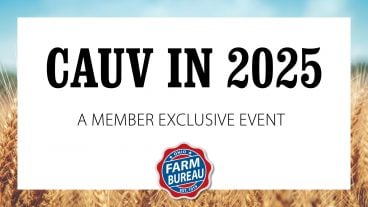

In this recording, learn about the recent increases in Ohio CAUV values, gather information to help you understand the property tax system, and get an update on legislative action.
Read More

Join us for an informative session March 8. Experts will explain recent changes, answer your questions, and help you better understand how CAUV impacts you.
Read More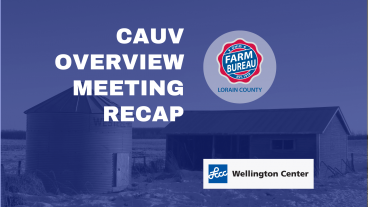

Lorain County Farm Bureau hosted a CAUV meeting Jan. 30, 2025 at LCCC Wellington Center presented by the Lorain County Auditor’s Office and Lorain County Farm Bureau.
Read More

Join Ohio Farm Bureau for a free webinar Feb. 11 to discuss the recent increases in CAUV values, Registration is required.
Read More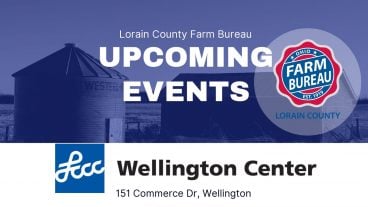

Join us Jan. 30 for a CAUV Overview Meeting at Lorain County Community College.
Read More